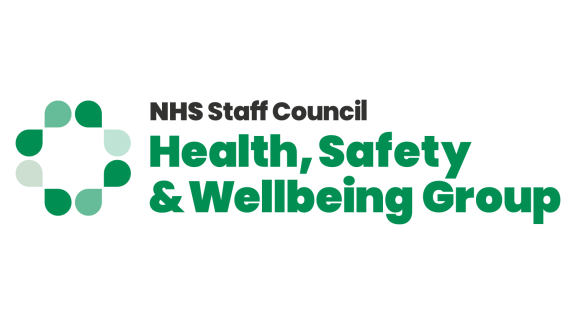Empowering staff to assess suicide risk in colleagues

Overview
In the middle of the first wave of the COVID-19 pandemic, University Hospitals of Northamptonshire NHS Group, which comprises of Northampton General Hospital (NGH) and Kettering General Hospital (KGH), became apparent that the risk to staff mental health was very high due to mass redeployment, staff being exposed to traumatic events that they wouldn’t normally have seen, and staff not having the right training and psychological capacity to deal with trauma.
The trust developed a suicide risk awareness campaign aimed at all staff, which empowered staff to start a conversation and offer support when they see someone struggling.
Key benefits and outcomes
- A simple resource was developed to enable all staff to help any colleague in need.
- Specialist training now takes place every few months for staff on how to approach sensitive conversations.
- Staff feel more comfortable initiating conversations.
- Those at risk received support and many staff have stayed in work, rather than going on long-term sick.
- A suicide risk register was established and in the last 11 months, 62 assessments of very serious risk were recorded, of which a significant proportion had plans to end their life.
What the organisation faced
When Dr Claire Hallas, the lead health psychologist in the staff psychology service came into post at the trust in March 2020, she was concerned that there was no suicide prevention protocol or assessments in place for patients or staff. It was difficult for staff working outside office hours to access wellbeing services due to the service operating in daytime working hours and closing at 5pm.
The trust had a safeguarding team in place that staff could go to for advice, however, Claire wanted staff to know that anybody could learn how to briefly assess somebody for risk and know what they could do to help.
In the middle of the first wave of the COVID-19 pandemic, it became apparent that the risk to staff mental health was very high. From this, cases of moral injury started to emerge from staff having to make difficult decisions. Between August and October 2020 the group was seeing a high level of psychological risk, so Claire recommended to the trust board and HR director that staff suicide needed to be added to the register of risks.
A critical issue that was identified that put staff at greater risk was that clinicians and healthcare workers don’t typically access community based crisis services / their local A&E department in the same way as the general public. Medical staff felt that they ought to be delivering those services, rather than using them.
What the organisation did
When the primary focus was on delivering frontline care to patients, a brief assessment process and strategy was created so that managers and colleagues could apply it quickly if they were worried about a colleague that needed support.
A short assessment form was added to the staff intranet so everyone could access it. It was also widely disseminated through clinical governance forums and discussed during staff briefings.
The form asks:
- Name of the person doing the assessment
- Name of the person being assessed (this can remain anonymous)
- Brief assessment Qs to determine thoughts of suicide and plan/intent to act on thoughts.
- Action and process at the end of the assessment to record the outcomes and support and follow up needed for the colleague:
- non-urgent care and follow up from NGH supporting our staff (SOS) peer support team
- urgent referral to the Northamptonshire crisis team / integrated response mental health hub, which is a 24/7 service.
If someone has made plans to end their life, there's an immediate emergency plan that can be implemented immediately. If someone is experiencing suicidal thoughts, but hasn’t made plans, there's a process to refer to in house NGH health and wellbeing services or community psychology-mental health services.
The form can be made confidential if the person doesn’t want their name or details recorded, as long as the action taken is recorded.
Implementation
Working with the HR director, Claire prepared strategic presentations for the board as they felt it was important to add it to the trust's risk register to acknowledge the risk to staff and its wider organisational risk.
The psychology team realised that a multifaceted approach to the implementation of the risk assessment process was needed, so the assessment form was communicated in staff and leadership meetings, regardless of department or grade, to create a cascade of information both from the bottom up and top down.
The health and wellbeing service provides regular training on having difficult conversations and on suicide risk awareness for managers, which covers understanding suicidal thoughts, the causes and myths around suicidal thoughts and learning how to the use the distressed staff at risk form and process.
Both courses aim to dispel the myth that asking how someone is may make matters worse, while helping destigmatise these conversations with clear and simple questions to use and actions to follow.
Staff from the SoS peer support service and the staff psychology service are available for support should managers need it. This could be on how to complete the form, what they need to ask in the risk assessment and what they might address with their staff member about accessing crisis services.
There's no extra funding for the risk assessment, so this has been incorporated into the staff psychology service, and the SOS peer support service, which is run by a trained clinical nurse lead.
How data is captured
There is a highly confidential suicide risk assessment register, which is only accessible through the psychology lead and the SOS team leader. It tracks reported suicide risk assessment with staff and looks at patterns of risks across different directorates and ensures the risk assessors follow through with referral for support or treatment services.
If staff want to remain anonymous, their details are not recorded on the governance database, but they will be identifiable by their managers who can support them. This data is also captured and reported monthly to the group trust people board, to look at escalations of risk and how they might identify where risks are appearing across the trust.
Results and benefits
During 2021, 62 assessments of suicide risk assessments were recorded, of which a high proportion had plans to end their life. The number of assessments are escalating over the year across the trust staff groups.
A small proportion of around 15-20 per cent had immediate plans to harm themselves and others had no plans but had had regular and distressing self-harm and suicidal thoughts.
Without this intervention many of the staff that were assessed wouldn’t have had the opportunity to talk about having these significant mental health difficulties and an opportunity to feel supported.
Northampton General Hospital partners closely with community mental health providers and been a key instigator of a staff preventative crisis service pathway which has helped to keep staff in work. Potentially staff could have gone on long-term sickness, or possibly not returned to work. Staff who feel supported can stay in work, even with quite significant mental health problems and the support of their manager and wellbeing services.
Overcoming obstacles
Challenging the idea that suicide risk assessment and discussions are only for mental health professionals has been a steep learning curve for team leaders. The intention of this process was to show that it's not just for psychiatric or psychological professionals to have these conversations - anyone can have them. With support, staff have come to understand that having these simple but important conversations with colleagues can save lives.
Finding methods of cascading the knowledge into clinical teams and non-clinical teams, was sometimes difficult. The trust tackled this by consistently using internal communications channels and making sure the messaging got through to team meetings, staff briefings and private social media channels.
Staff feedback from early-on in the process found that they did not feel skilled enough to have these conversations and asked for more training. There is now more specialist and practical training that takes place every few months. Anyone can book this two-hour training and it is inclusive of all roles, teams and services across the trust. Due to the pandemic, much of the training has been online, when the preference would have been more face-to-face training.
With more time, a stakeholder engagement group, involving people from various clinical and non-clinical groups across the trust, would have been helpful to help gain support and spread messaging about the service, however this is work in progress.
Takeaway tips
- There may be initial hesitancy - providing training and a clear process can build confidence.
- Developing a robust internal communications campaign is essential.
- Anyone can ask a question to save a life, and everyone can be a part of the health and wellbeing conversation.
- When implementing a suicide risk assessment ensure this links to existing mental health training and external community mental health services as acute trust support is not crisis focused.
Future plans
The trust is planning to continue developing the training to include experiential use of the form in role-play scenarios to really increase familiarity and confidence in its use. It will also continue to work to break down the stigma of talking about suicide at a systems level, in line with the NHS Zero Suicide Ambition to improve the culture and understanding of this distressing experience.
Further information
For further information on this case study please contact Dr Claire Hallas, group head of health and wellbeing at University Hospitals of Northamptonshire, at c.hallas@nhs.net.



